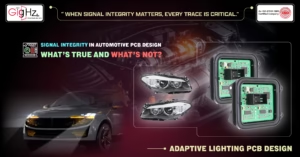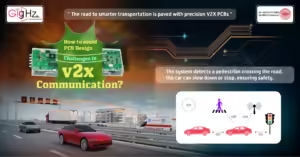Why 98% of successful pcb designers prioritize effective pcb layout optimization for Automotive EVs?
- Posted On:
- June 18, 2024
- Category:
- Ecad
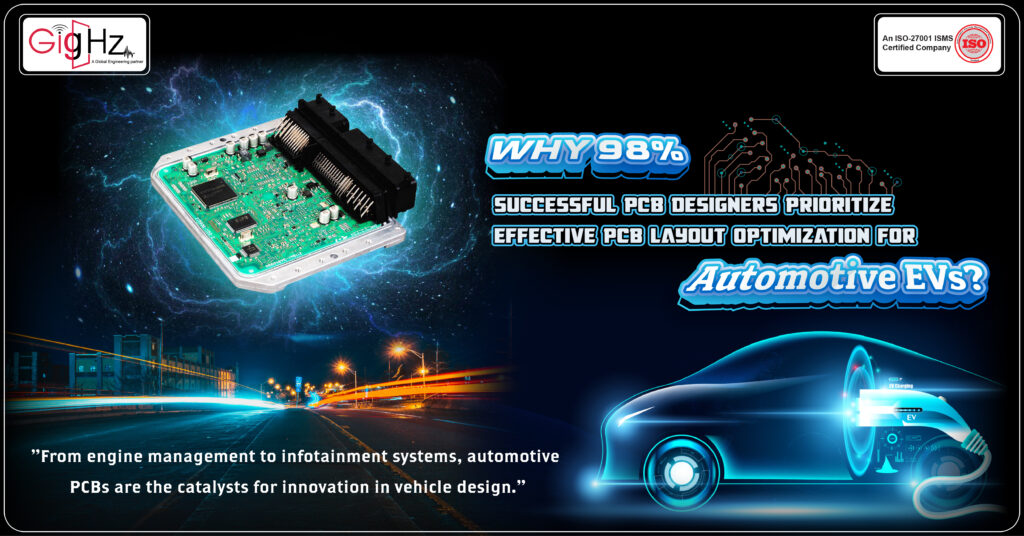
PCB layout optimization
Did you know that electric vehicles are on the moon?
That’s right – astronauts started using electricity-powered vehicles to explore the surface of the moon 50 years ago.
Far out, right?
As far as cars on the moon go, it’s EVs: 1; petrol vehicles: 0.
So, why it is?
Parents everywhere know that peaceful car rides are a rare gem, especially during family road trips and commutes.
Electric cars provide an unexpected serene driving experience.
The absence of a noisy internal combustion engine results in remarkably quiet rides, allowing families to hear one another (or hear the music you’re jamming out to) more easily.
What about electricity costs?
Consumer Reports study showed that EV drivers spend an average of 60% less each year on fuel costs than gas-powered cars drivers.
When designing the PCB for electric vehicles, it is essential to focus on optimizing the PCB layout effectively to ensure it can support all the unique features of the vehicle.
Let’s dig in for the Strategies and its importance,
Contribution of Printed Circuit Boards in EVs
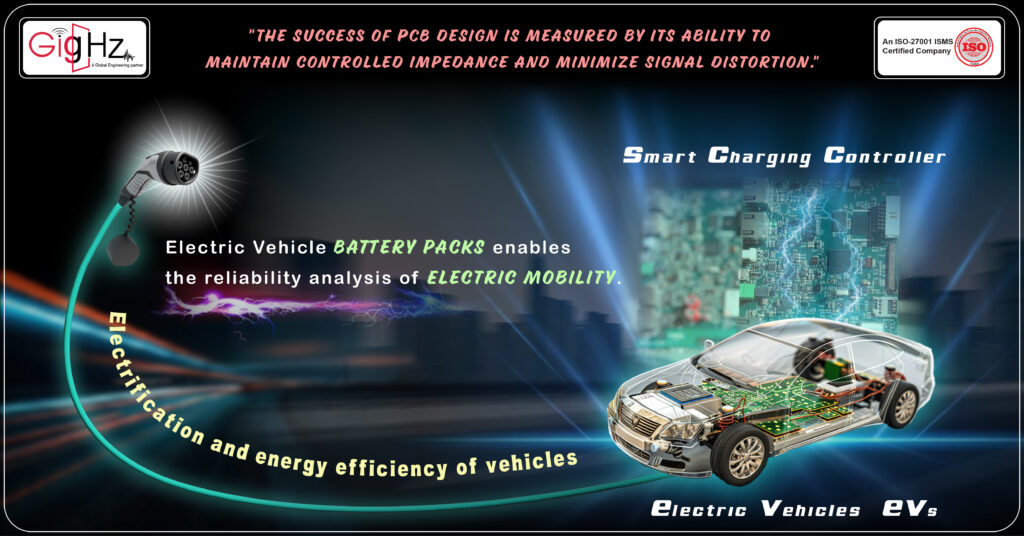
The contribution of Printed Circuit Boards in Electric Vehicles (EVs) is immense.
PCBs play a crucial role in the design and functionality of various electronic systems within an automotive setting.
Through the optimization and management of power and energy, PCBs help accelerate the electrification of vehicles and improve overall energy efficiency. The integration of PCBs in Electric Vehicle Battery packs enables the reliability analysis and performance of Electric Mobility.
By investigating and assessing various electronic components and systems through simulation and forecast, PCBs can contribute to a more holistic and qualitative approach towards future mobility.
It is crucial to consider the environmental impact and lifecycle assessment of Lithium-Ion batteries used in EVs to mitigate the global warming potential and other relevant environmental factors.
The deployment and uptake of Electric Vehicles (EVs) heavily rely on the viability and efficiency of powertrain systems, including the design and integration of advanced Printed Circuit Boards (PCBs).
Research and development in the realm of automation and smart grid technologies are key to accelerating the electrification of automobiles and enhancing their overall performance. Simulation and comparative studies are essential in assessing the impact of PCBs on vehicle range and power efficiency.
How PCBs Support Automotive EVs?
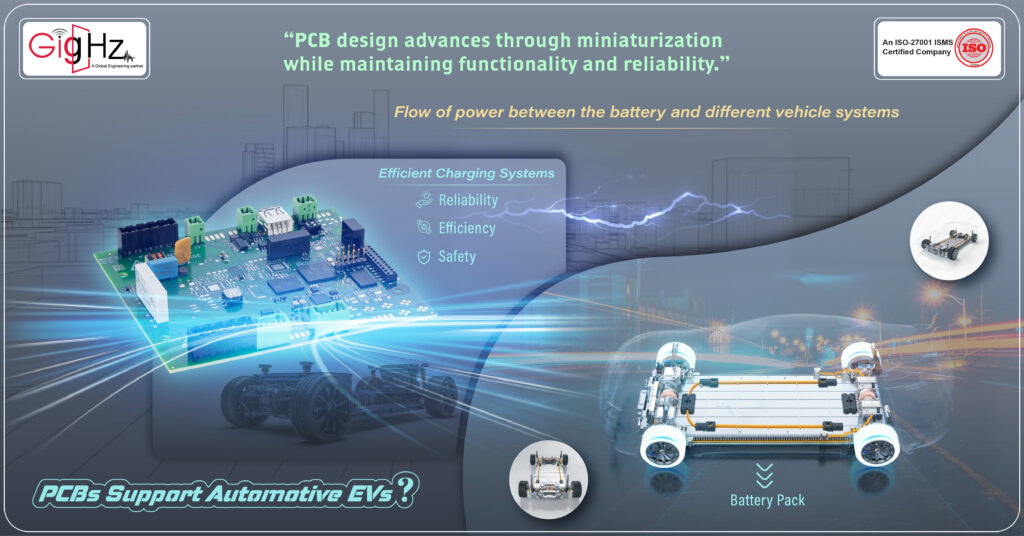
When you turn on your Electric Vehicle, you might not realize the crucial role that Printed Circuit Boards play in powering its functionality.
These intricate boards act as the nerve center of the vehicle, enabling seamless communication between various electronic components.
From controlling the flow of power between the battery and different vehicle systems to regulating charging procedures, PCBs quietly work behind the scenes to ensure the smooth operation of your EV which is not the simple pcb layout.
Power Regulation and Control: PCBs in EVs are instrumental in regulating and controlling the flow of power between the battery pack and essential vehicle components. This precise management of power distribution helps optimize energy efficiency and maintain system reliability.
Efficient Charging Systems: PCBs are crucial in Electric Vehicle Charging (EVC) systems, where they enhance the reliability, efficiency, and safety of the charging process. These boards facilitate the seamless transfer of power during charging, ensuring optimal performance of the EV’s battery system.
Integration of Electronic Components: PCBs provide a sturdy platform for mounting and interconnecting electronic components in EVs. By offering mechanical support and facilitating electric connections, these boards enable the seamless integration of various systems within the vehicle, contributing to its overall functionality and performance.
Quality Assurance and Inspection: Advancements in Electric Vehicle PCB inspection highlight the critical role of PCBs as core components that directly impact the performance of electronic systems in EVs. Rigorous inspection processes ensure that PCBs meet stringent quality standards to maintain the reliability and efficiency of the vehicle’s operations.
In essence, Printed Circuit Boards and the multilayer pcb design form the technological backbone of Automotive EVs, enabling efficient power management, seamless integration of electronic components, and overall performance of pcb layout optimization in the realm of electric mobility.
Why 98% of successful pcb designers prioritize effective pcb layout optimization for Automotive EVs?
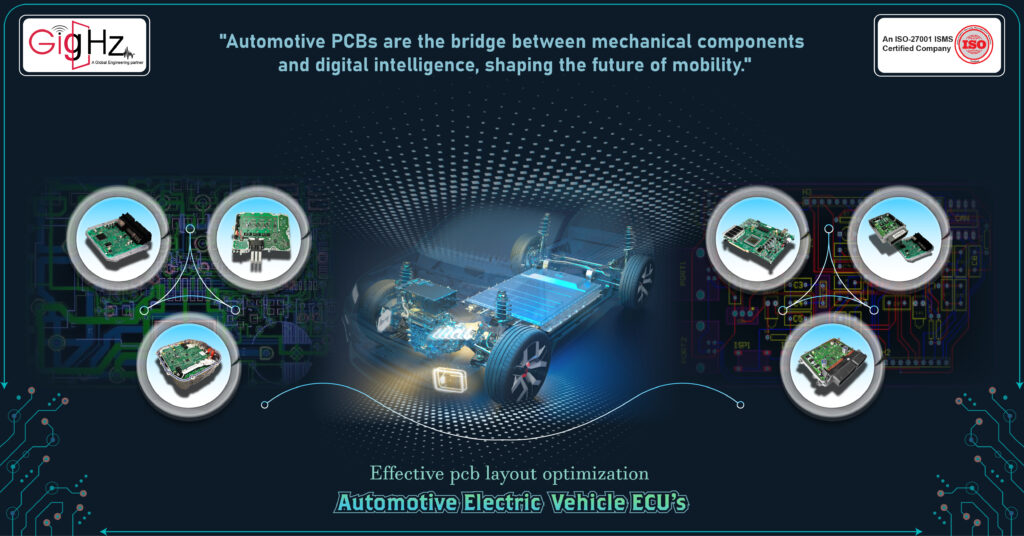
In the automotive industry, the integration of high-performance printed circuit boards (PCBs) is revolutionizing electric vehicle (EV) technology, setting a new standard for efficiency and innovation.
Let’s explore how effective layout strategies in PCB design are optimizing the performance of electric vehicles, aligning with the technical insights found in today’s search results.
Signal Integrity Optimization for Seamless Integration
Electric vehicles rely on intricate electronic systems for efficient operation. PCB designers prioritize signal integrity management by meticulously routing signals and implementing impedance control techniques. This ensures that critical data transmission within EVs remains accurate and free from disruptions, enhancing overall system reliability and performance.
Robust Power Distribution Networks for Enhanced Efficiency
High-current PCBs play a crucial role in powering electric vehicles. Designers excel in creating robust power distribution networks, optimizing power plane structures to minimize voltage drop and electromagnetic interference. This meticulous approach guarantees stable power delivery to essential EV components, improving energy utilization and driving overall system efficiency.
Efficient Thermal Management for Longevity
Thermal management is a key consideration in electric vehicle design. PCB designers implement advanced thermal strategies, such as thermal vias and heatsinks, to dissipate heat effectively and prevent component overheating. By proactively addressing thermal challenges, designers ensure the longevity and reliability of electric vehicle systems.
Design for Manufacturability to Drive Innovation
Design for manufacturability (DFM) principles guide PCB designers in optimizing component placement, routing, and assembly processes for electric vehicles. By adhering to DFM guidelines, designers streamline manufacturing workflows, minimize errors, and accelerate the production timeline, paving the way for innovative advancements in EV technology.
Continuous Learning and Innovation in EV Design
Successful PCB designers in the electric vehicle sector embrace continuous learning and innovation. By staying updated on emerging technologies and industry trends, designers refine their skills, leverage simulation tools, and pioneer cutting-edge design methodologies. This dedication to innovation propels electric vehicle technology forward, shaping the future of sustainable transportation.
In the context of electric vehicles, the application of advanced PCB design principles and the pcb layout tricks not only enhances performance and efficiency but also exemplifies the pinnacle of precision, reliability, and ingenuity in modern automotive engineering.
Our Notable Upgrade : Engineering as a Service(EaaS)
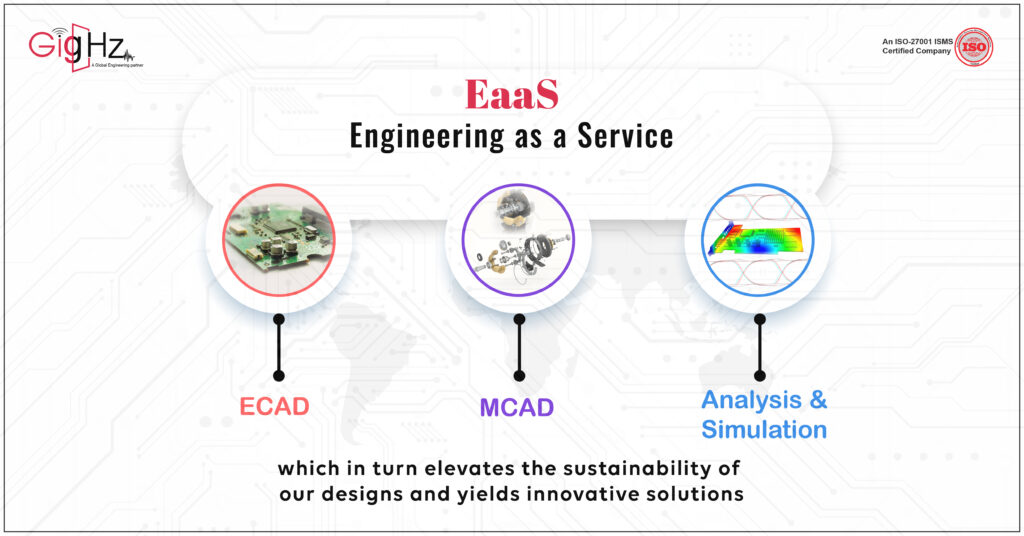
Absolutely!
The world of engineering is constantly evolving, and it’s fascinating to see how Engineering as a Service (EaaS) is keeping up with the demands of the industry.
By harnessing the power of ECAD, MCAD, and Analysis & Simulation, we’re able to provide comprehensive solutions that cover every aspect of the engineering process.
It’s really amazing how far we’ve come in terms of integrating different disciplines within engineering. With EaaS, we can seamlessly bring together electronic design, mechanical design, and analysis and simulation, all under one roof.
This not only saves time but also improves efficiency and collaboration among engineers.
Conclusion
Overwhelming prioritization of effective PCB layout optimization by successful PCB designers for Automotive EVs underscores the critical role of optimized layouts and design trends in maximizing space utilization, enhancing safety and efficiency, adhering to reliability standards, and improving overall circuit performance in the realm of electric mobility and the adoption of electric vehicles.
By focusing on these aspects, designers pave the way for key role of innovation and advancement by the challenges and opportunities in the automotive industry, driving the evolution of Electric Vehicle technology towards a more efficient and reliable future.
Discover our Specialities. Visit our Services Page. https://gighz.net/services/
